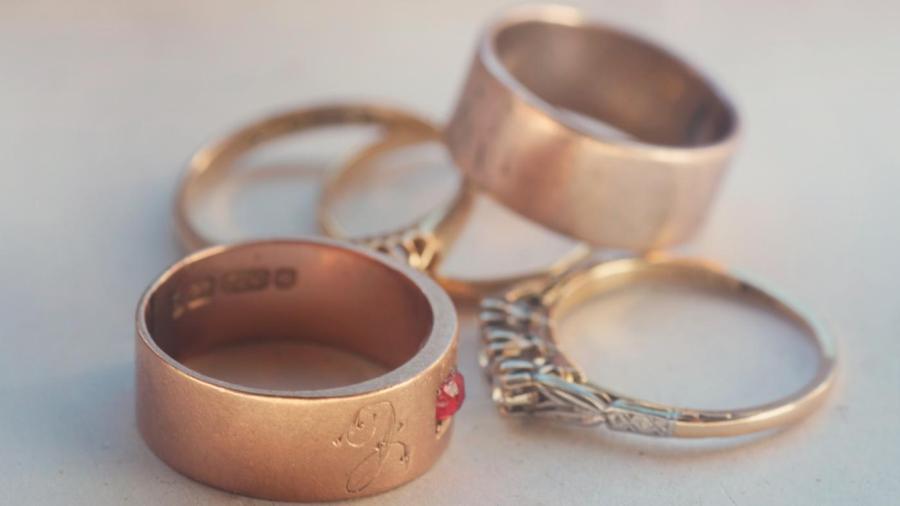How Is Gold-Plated Jewelry Marked?

Gold-plated jewelry is marked several different ways, but some of the most common markings are “GP,” “GEP,” “RGP,” “HGE” and “HGP.” Markings help determine if jewelry is really silver with gold plate or real gold.
Markings on gold-plated jewelry are initials. “GP” stands for “gold-plated.” Some, such as “GEP” for “gold-electroplated’ and “RGP” for “rolled gold plate,” refer to the process used to coat the underlying metal with gold. “HGE,” for “heavy gold electroplate,” and “HGP,” for “heavy gold plate,” signify that the manufacturer used more than the standard amount of gold to plate the jewelry.
Gold-plated jewelry is sometimes called “vermeil.” It also is sometimes referred to as “gold-dipped.” The metal underneath the gold plate can be a variety of metals, including brass, bronze, and steel. Vermeil jewelry is gold-plated silver. Many jewelers use a high content of gold, often pure 24-karat metal, to create vermeil jewelry.
Another term used for costume jewelry is “gold-filled.” This term refers to a particular process used to plate bronze or some other metal with gold. Gold-filled jewelry has to be at least 5 percent gold. Usually 14-karat gold is used in the gold-fill process, which means the jewelry is durable and retains its beauty.





